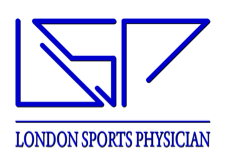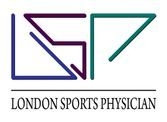Shoulder Hydrodistension
Hydrodistension Injections for ‘Frozen Shoulder’
Background
- ‘Frozen shoulder’ (also known as ‘adhesive capsulitis’) is a painful condition associated with restriction in the shoulder joint. There are several causes- these can include traumatic injury and arthritis.
- One of the non-surgical treatments for this is known as hydrodistension/ hydrodilatation. This involves injecting the shoulder joint with a large volume of fluid to stretch the shoulder capsule and disrupt adhesions (scar tissue), thereby freeing up the joint. Corticosteroid, local anaesthetic and a large volume of sterile saline is included as part of the procedure.
- There is good evidence that hydrodistension provides benefits in reducing pain, improving range of movement and function in ‘frozen shoulder’.
- It appears to be more effective than corticosteroid injection alone and as effective as manipulation-under-anaesthesia (MUA), with fewer complications. It can avoid the need for surgery in some patients.
- Repeat injections may be required.
What does the procedure involve?
- Hydrodistension involves stretching the capsule of the joint by injecting a mixture of corticosteroid, long-acting local anaesthetic and sterile saline. The procedure takes about 30-45 minutes to complete and you will be able to go home immediately afterwards.
- It is essential you have adequate fluid to drink and consume a small meal an hour or two before the procedure- this is to prevent dizziness or faints which can occur during or after the procedure due to a combination of pain/ anxiety / excitement.
- Similar precautions should be taken for 30-60 minutes after the procedure- please ensure you have access to some food and drink afterwards to prevent hypoglycaemia (low blood sugar).
- There are several ways of doing this procedure. For example, you may be asked to lie on your front (prone position) with your hand hanging over the side of the procedure couch. The aid of gravity encourages the joint space at the back of your shoulder to widen. Alternatively, you may be asked to lie on your side, with the painful shoulder pointing towards the ceiling and internally rotated.
- The skin at the back of your shoulder will be thoroughly cleaned and sterilised. Short-acting local anaesthetic (Lidocaine) will initially be injected under the skin (subcutaneously) to numb the area well and provide pain relief.
- Using ultrasound to provide accurate guidance, a sterile needle will be introduced into the shoulder joint via a posterior approach (from the back). The joint is then slowly distended with a combination of sterile saline, long-acting local anaesthetic (Marcaine) and corticosteroid (Kenalog/ Depomedrone).
Safety profile & possible risks:
- The procedure appears to be very safe, with temporary pain during the procedure being the most common complaint.
- There may be temporary discomfort for a few days after the injection.
- It is carried out under sterile conditions. The risk of infection is very low (1 in 5,000-20,000 risk).
- There is a small risk of bleeding. This procedure is contraindicated if you are taking high-dose anti-coagulants such as Warfarin and will require further discussion beforehand about how best to proceed. Aspirin is fine.
What happens following the procedure?
- Some people experience moderate discomfort due to the joint distension- this can last up to several hours after the procedure. It is therefore advisable you bring someone to take you home after the procedure (e.g. adult friend/ family member).
- Please do not to drive or operate heavy machinery for a minimum of 6 hours after the procedure.
- Please avoid heavy workouts for the next 2 days to avoid flaring up the shoulder.
- You should continue physiotherapy after the procedure and it is recommended that you see your therapist approximately 2-3 days afterwards as the hydrodistension procedure buys a ‘window of opportunity’ in which to progress your physiotherapy rehabilitation. It is important to realise the success rate for this treatment is significantly reduced without the physiotherapy component afterwards.
- Some patients will experience immediate relief. For others, it can take a week to two weeks to achieve full benefit.
- You will be asked to return to clinic for a review 3-4 weeks later to monitor your symptoms and progress.


